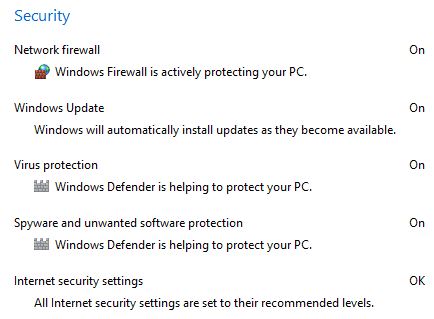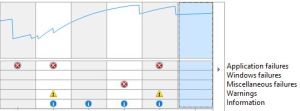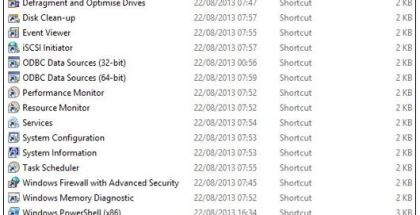Action Center – the Windows System Health Utility
In this particular post, I will be covering the Action Center. This is a utility on Windows 7, 8.1 and 10 which can be used to monitor all aspects of your system from Virus Protection (anti-virus utilities) to Windows Update.
To find and open this utility, click on the start menu and search Action Center on Windows 7, 8.1 and 10 – with a start menu. On Windows 8.1, You can also access the Search bar by moving your mouse cursor to the right hand corner and moving it downwards, and then click on Search. Alternatively, on Windows 10 click on Cortana and say ‘Open Action Center’.
What is Included in the Action Center?
So first of all, Action Center provides an overview of your system settings. This means that the system health utility will inform you of any messages or necessary maintenance which your Windows 7, 8.1 or 10 PC requires.
This tool is very beneficial to any PC user who wants to see if any changes are required to the system, whether it be Virus Protection or Device Software. I personally, recommend hiding messages from Device Software as this section can sometimes recommend updating core drivers, such as your Chipset or BIOS – which is not recommended. Please refer to the section Hiding Action Center Messages.
If I am to access the Action Center, What Type of Settings can be checked?

The security specific settings which are shown in Action Center
In terms of the security aspect of the utility, there are several aspects which can be updated through installing a firewall to keep out any network threats and virus protection which ensures that viruses cannot infect your PC through doing regular anti-virus scans – which is recommended on a weekly basis.
There are also tools available in the Windows utility including Reliability Monitor, which can be used to check your system for five primary criteria:

To access the tool, click on View Reliability History
- Application Failures – where there has been a program crash
- Windows Failure – any major problems with your PC may be listed there
- Miscellaneous Failure – if Windows has not been shut down properly
- Warnings – if an application requires a re-installation or has not been setup properly by Windows
- Information event – events such as a successful Windows Update
Next to the event, there will be a option to Check for a Solution. This will make Windows check for any potential solutions to the problem and this can also be accessed by right clicking on the event.
An example system is shown below with these five criteria illustrated:

The associated icons of the different criteria
Hiding Action Center Messages:
Please note: Follow the initial steps in the introduction to access Action Center prior to these steps.
To hide any specific messages or notifications on Action Center, follow these steps:
- Once in Action Center, navigate to the left hand menu
- Click on Change Action Center Settings
- Deselect the tick by the option you would like to hide by clicking on the checked box
- The deselected option messages and notifications will now be hidden
Any questions or queries, please post it in the comments section.
Troubleshooting 101.



Comments